The Microsoft Surface Pro 11 with Copilot+PC is a new Qualcomm Snapdragon X Elite or Plus Windows on Arm (WOA) PC that is powerful enough for generative AI.
I am sitting here pondering how to review this device. Yes, it is hardware, so there will be some ‘speeds and feeds’, but how do I do justice to the Copilot part? The answer is I am not sure, and this will be an adventure for us all. So, tolerate me as we explore our first AI PC.
What is an AI PC?
In April, we wrote that AI PCs are coming. What does that really mean? The short version is that such PCs will have a neural processor unit (NPU) in addition to the central processing unit (CPU) and graphics processing unit (GPU). Think of it as a third engine to do some heavy lifting for the other two that used to do everything.
The other short version is that only AI-aware apps know there is a third engine, and these are slowly emerging. For example, Microsoft 365 apps, Bing, Copilot, and new MS apps like Image Creator, Studio Effects, Live Captions, and more are coming. MS says that most of its daily apps will support some AI. It has an AI blog that is interesting reading (not recommended for non-tech savvy).
What is AI, and where does Copilot fit in?
AI uses machine learning from massive datasets – virtually everything written or created – to recognise patterns and apply pre-programmed responses. Read What is AI (Artificial Intelligence), how will it affect me?
It is excellent for mining mountains of data to find new links and causalities. For example, AI has been applied to traffic flow, and traffic light timing improvements have been found to decrease bottlenecks. In medicine, it can analyse X-rays, scans and patient data and identify those at risk.
It is not, and hopefully never will be, the boss in charge of all decisions that finds humans to be the problem and eliminates them. There are substantial legal challenges, and I am pleased that Microsoft believes that AI serves people, not vice versa.
Copilot is really about generative AI, which involves creating text content, drawings, artwork, and designs from other people’s work!
Read our new guide – What is Microsoft Copilot – the unthinking person’s guide.
The real issue is getting you and me used to AI helping us: filling in sentences as we type, offering suggestions for better expression, researching, finding faster/cheaper/better ways to work, scheduling meetings, and more.
So, with that, it goes back to ‘speeds and feeds’’.
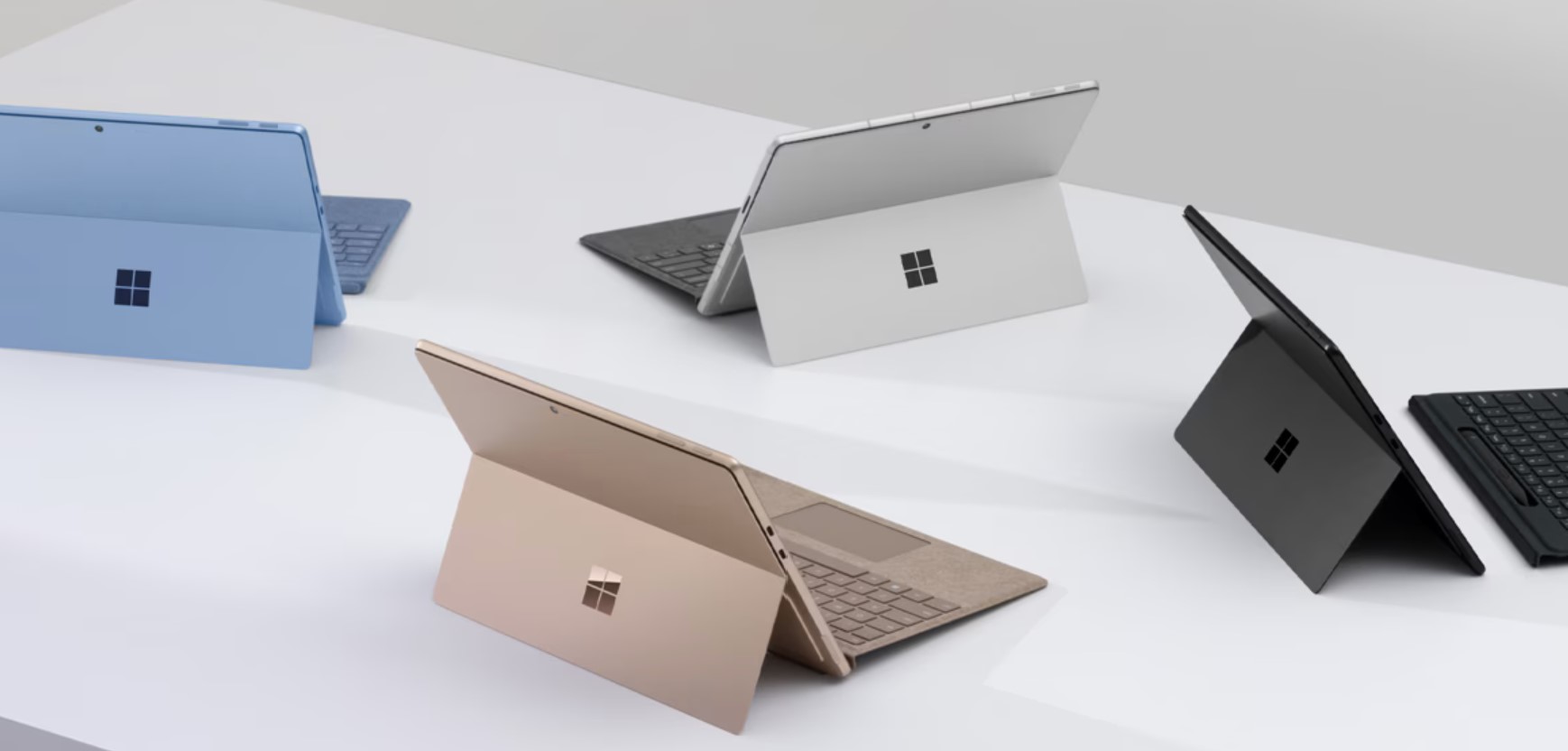
Australian Review: Microsoft Surface Pro 11 Snapdragon X Elite, 16/512GB Model 2076
There is also a Surface Laptop 7 Copilot+PC in 13.8 and 15″ with the option of a 10- or 12-core X Plus /Elite processor and an LCD screen.
| Website | Product Page Note there are two consumer versions with Windows 11 Home. 10-core Snapdragon X Plus with LCD. 12-core Snapdragon X Elite with OLED display. There is a business version coming with Windows 11 Pro. |
| Price Ram/SSD |
10-core 256/512GB $1899/2199 12-core 512GB/1TB $2699/2999 MS Exclusive 12-core 32GB/1TB $3599 All plus keyboard and pen options Surface Pro Keyboard and Pen $499.95 Surface Pro Keyboard only $309.95 Surface Slim Pen only $189.95, and Charger $49.95 |
| Colours | Sapphire, Dune, Black, and Platinum |
| From | Microsoft Store and Harvey Norman, JB Hi-Fi, The Good Guys, and other major retailers |
| Warranty | One-year ACL with optional 2/3/4 Accidental Damage coverage |
| Country of Origin | China |
| Company | Microsoft is an American multinational technology company with headquarters in Redmond, Washington. It develops, manufactures, licenses, supports, and sells computer software, consumer electronics, personal computers, and related services. Read Can you trust Microsoft? You have to |
| More | CyberShack Microsoft news and reviews |
We use Fail (below expectations), Pass (meets expectations) and Exceed (surpasses expectations or is the class leader) against many of the items below. We occasionally give a Pass(able) rating that is not as good as it should be and a Pass ‘+’ rating to show it is good but does not quite make it to Exceed. You can click on most images for an enlargement.
We are also tightening up on grading. From now on, Pass, for example, means meeting expectations for the price bracket. A Pass Mark is now 70+/100, with extra points added for class-leading and excellence.
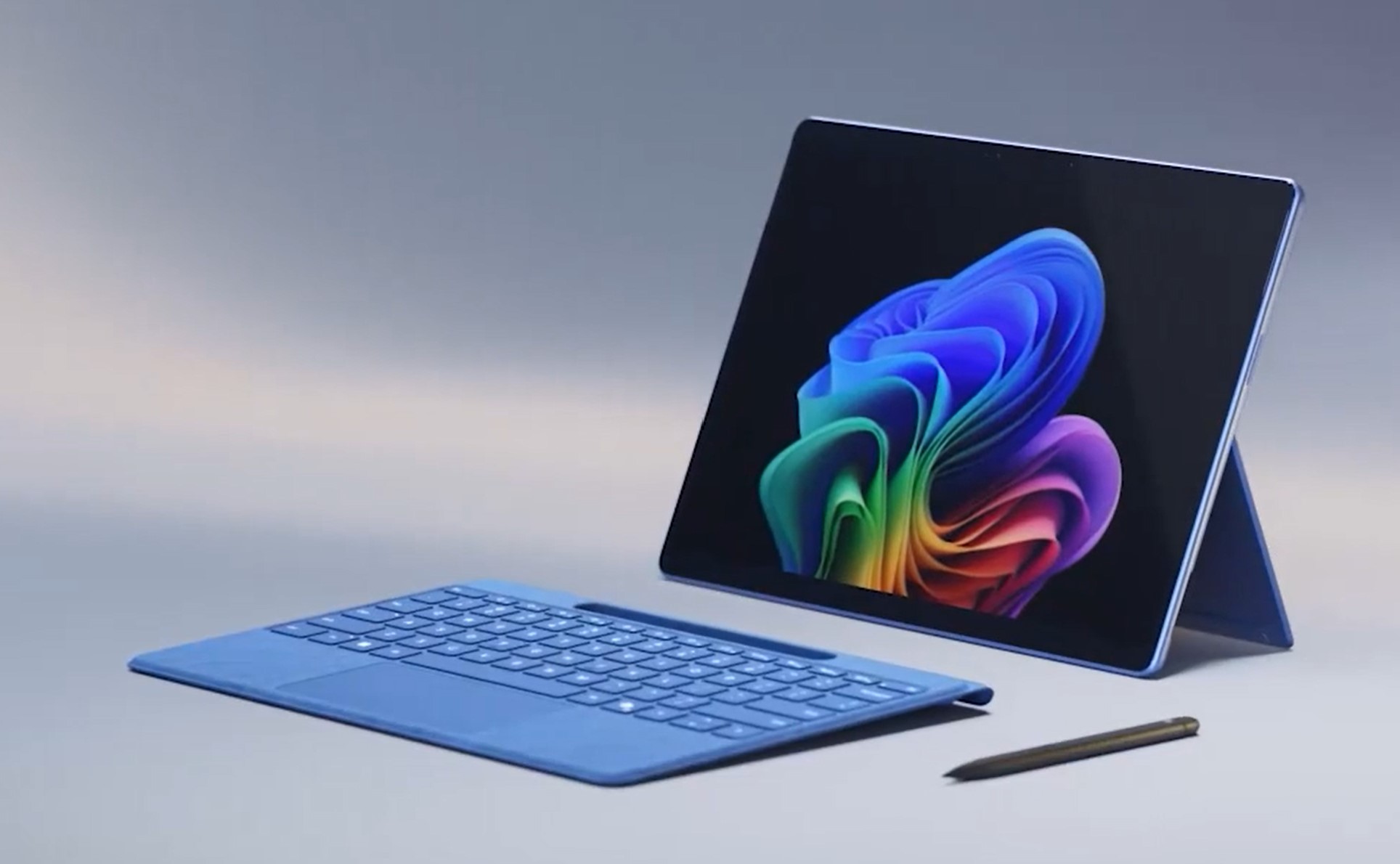
First Impression – It is a Surface Pro – Exceed
Microsoft calls this the 11th Generation.
Even though the internals are different, it still looks and feels like a 13.3” Surface Pro – a hybrid tablet with an optional keyboard/trackpad and stylus. The review unit uses the 12-core Qualcomm Snapdragon X Elite processor and has a beautiful OLED display.
The other major change is that the keyboard also has Bluetooth, so it doesn’t have to be attached to the tablet—only for charging. Great news—it is compatible with Surface Pro (SP) 8, 9 and 10.
It is 287 x 209 x 9.3mm x 895g. The keyboard/trackpad/cover is 289 x 221 x 5.25mm x 340g. The slimline pen is 136.8 x 11.3 x 6.3mm x 13g. The 15V/2.6A/39W charge brick weighs 215g with a 240V power cable. All up, that is 1463g in the kit bag. Still very light and comparable to the SP9.
USB-C 4.0 – Pass
Unlike the SP9 with 2 x Thunderbolt 4 ports (Intel 11th Gen or later processors only), this has 2 x USB-C 4.0 40Gbps.
The key differences are (TB4 in brackets)
- USB-C 4.0 supports 5V/1.5A/7.5W downstream (5V/3A/15W)
- 40Gbps speed maximum 1-metre cable (2m)
- Daisy chain devices not supported (6)
- No support for downstream hubbing (Yes)
- DisplayPort video output 1 x 4K@60Hz (2 x 4K@60Hz or 1 x 8K)
- 16Gbps PCI Express tunnelling (32Gbps PCIe).
- 100W upstream charge (same, but the limits are increasing)
- Does not support Ethernet, wake from sleep and more (Yes)
- No DMA attack protection (Intel VT-d DMA attack protection)
We tried a limited selection of TB4 docks and USB-C 4.0 hubs, which all work well.
And that brings us to the venerable, non-industry standard Microsoft Ribbon Port. In the distant past, it could connect to a Microsoft dock. Today, it is purely a power source that leaves the USB-C 4.0 ports free.
Interestingly, the Ribbon charges at 15V and up to 30W, whereas the USB-C charges at 20V and up to 60W faster. A decent 100+W PD 3.0/3.1 GaN charger multi-port charger from Belkin, Anker, or Zyron would be my choice for said kit bag.
Wi-Fi 7 and BT 5.4 – Exceed
The Microsoft Surface Pro 11 uses Qualcomm Fast Connect 7800. With a Wi-Fi 7 router, it can achieve up to 5800/5800Mbps on 320MHz/6GHz, 4800/4800Mbps on 240MHz/5Ghz network or MLO (aggregated speeds from 2.4/5/6GHz).
With a Wi-Fi 6 router, it can achieve up to 2882/2882Mbps on a 40MHz/5GHz band.
In our tests at 5m from a TP-Link Deco BE85 Wi-Fi 7 BE22000 tri-band mesh router
- Wi-Fi 7 6GHz network at 5764/5764Mbps full duplex, which is over five times faster than gigabit Ethernet
- MLO (multi-link operation) connects at 6453/6453Mbps using a mix of 2.4GHz, 5GHz and 6GHz.
BT 5.4 LE supports Windows Fast Connect and concurrent BT streams. As a bonus, you get Qualcomm aptX Voice, aptX Adaptive, aptX Lossless, SBC, and AAC. It also supports Qualcomm True Wireless-based earphones and Snapdragon Sound.
Processor – Pass for normal use and PAss+ for entry-level generative AI
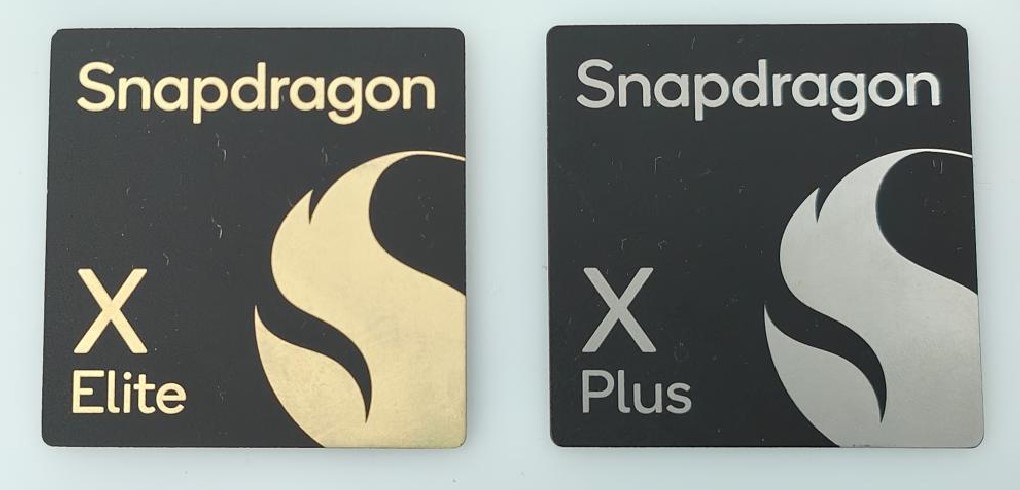
- X Elite12-Core processor 4GHz X1E-80-100 (Benchmarks) – similar CPU power to Intel Core Ultra 7 155U
- X Plus10-core 3.4Ghz X1P-64-100 (Benchmarks) – similar CPU power to Intel Core Ultra 7 155H
These are Qualcomm ARM-based Systems on a Chip (SoC), unlike the Intel or AMD x86 architecture, although, to be fair, both are moving to AI processors with a Numeric Processor Unit (NPU).
And it is not all about CPU/GPU power but NPU power—both of which have 45 TOPs. Microsoft demonstrated these against a comparable Apple MacBook with an M3 processor (with NPU), and for an Apple with Apples comparison, it appeared 20-30% faster.
And herein lies the rub – only AI-enabled apps that support an NPU get a performance boost. The GPU is roughly comparable to an Intel Iris XE 96EU – not for gaming. It supports up to three x 4K@60Hz monitors.
Unlike the 4nm Snapdragon smartphone processors, these must be cooled. They automatically throttle speeds under load. They support PCIe Gen 4×4 SSD and LPDDR5X-8448 RAM.
RAM is not upgradable, and there is a 32GB version if you think you need more.
Summary: There is little CPU/GPU difference between an Intel Core i7 apart from an NPU, which gives a performance gain to AI-enabled apps.
SSD – Pass
It provides entry-level PCIe 4×4 speeds.
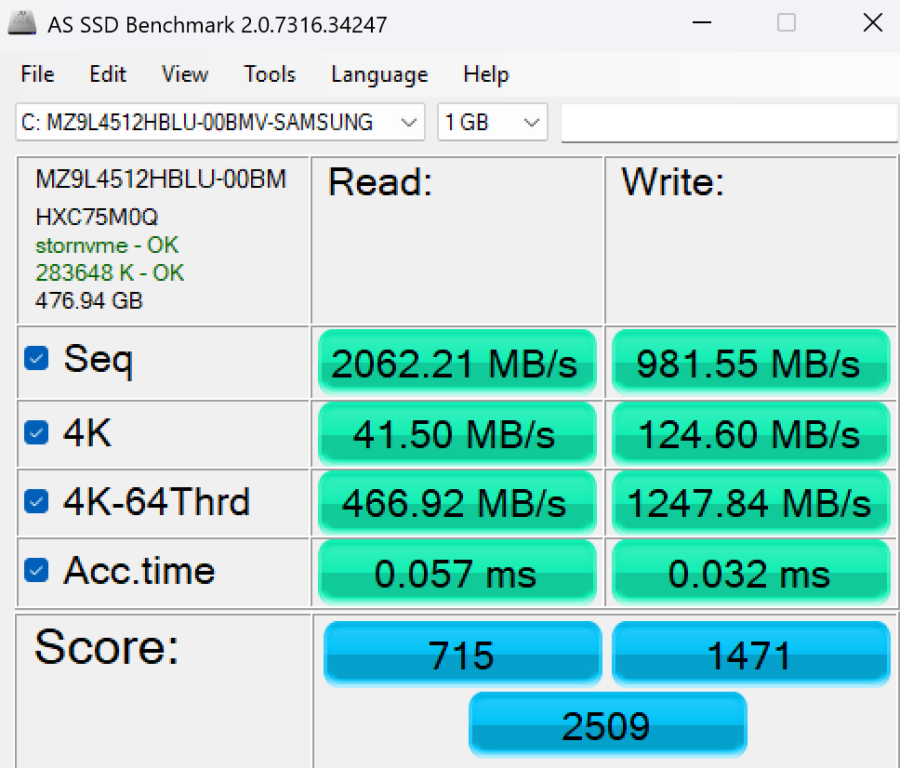
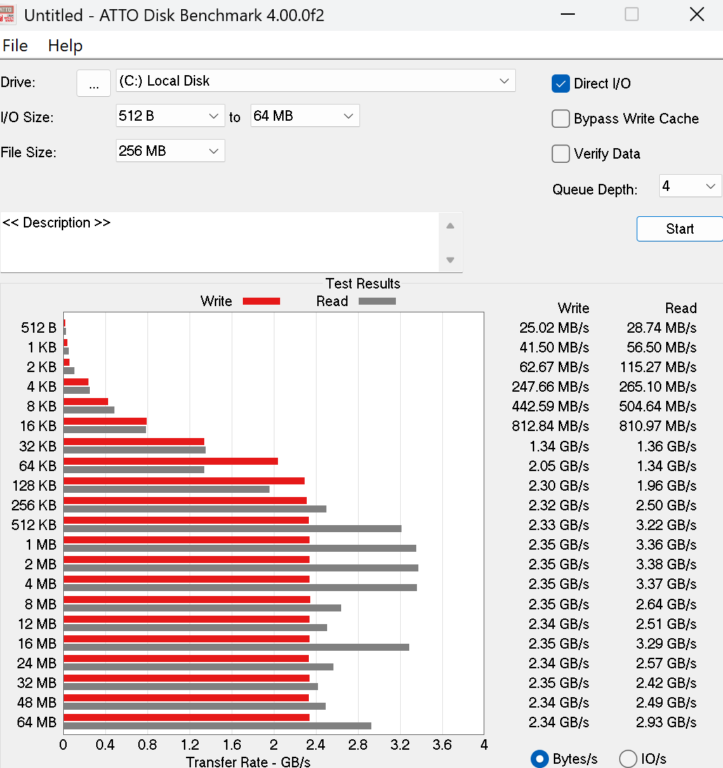
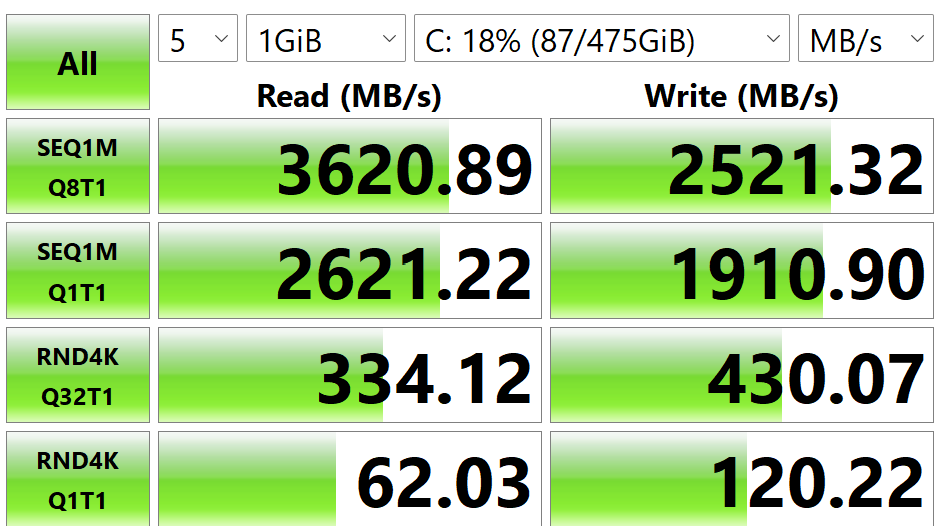
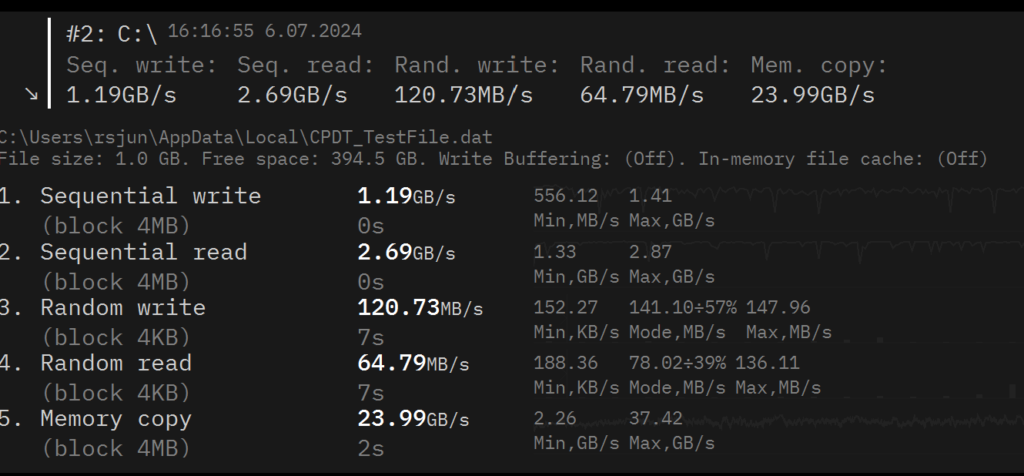
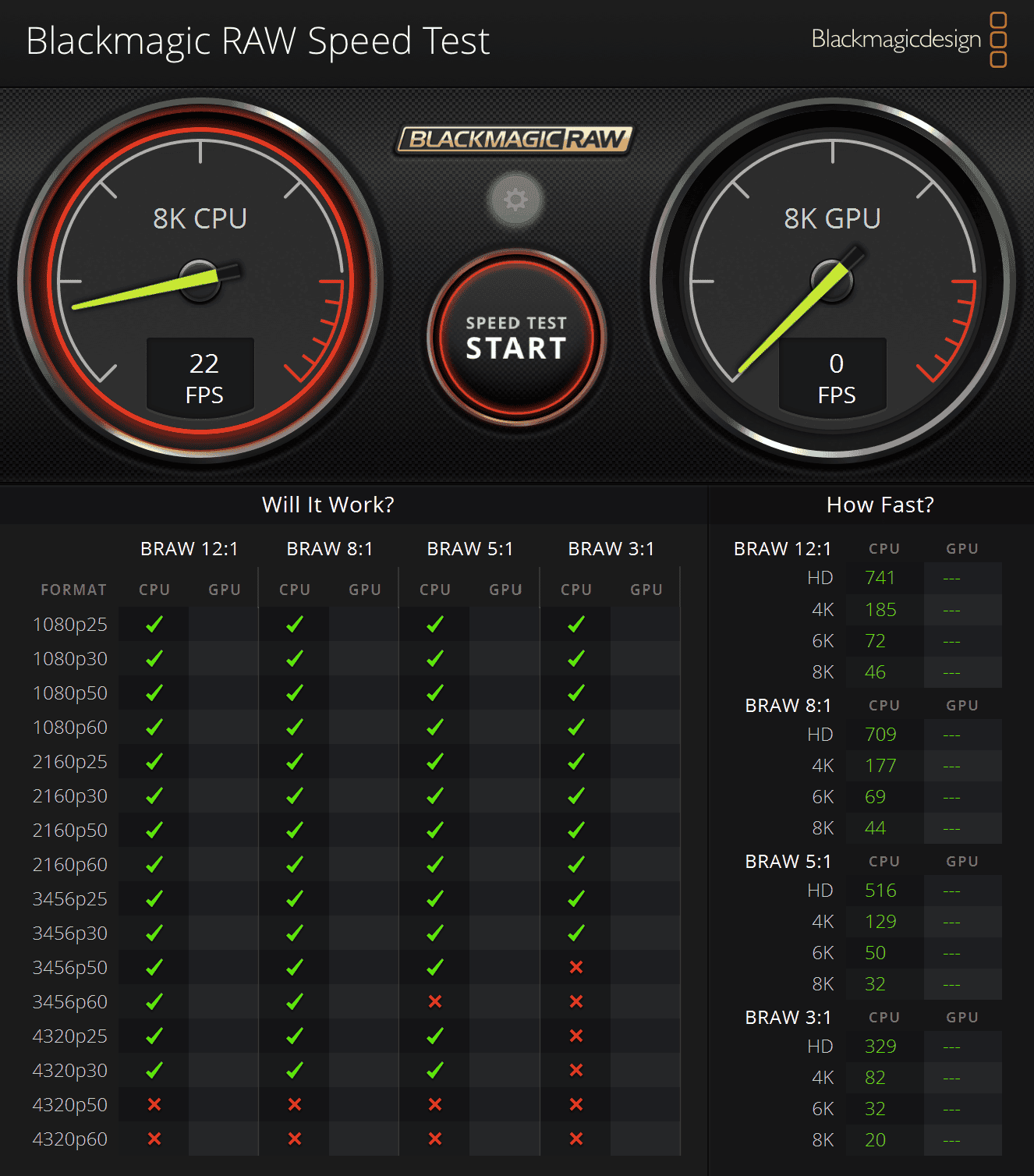
Windows on ARM (WOA) – Pass+ if you know its limitations
Let’s be clear—despite what any salesman tells you about Windows emulation, many x86 programs will not run on WOA.
I have been using WOA since 2018 on a Samsung Galaxy Book2 with a Qualcomm Snapdragon 850. Its main benefits are a fantastic 12.1” AMOLED screen, 4G LTE, long battery life, a ‘Surface-like’ kickstand, and a detachable keyboard. It has been upgraded from Windows 10 to 11 and runs Microsoft 365.
Initially, my frustrations were that most x86 software did not run, and if it did, it was painfully slow under emulation – it still is. I understand the Windows 24H2 update may improve that. I travel a lot and need a VPN (I use PIA – Private Internet Access), but that (and I understand all VPNs) will not run due to no kernel-level TAPI drivers. Any older device needing drivers likely won’t. Over the years, I got used to x86 software, even from the Microsoft Store, breaking WOA and numerous reinstalls to fix it.
Despite what Microsoft said at the launch (87% of the total app minutes people spend in apps today have native Arm versions), it won’t run PIA or most of the usual test software. Now, I am the first to admit that said apps are possibly badly written, make specific x86 routine calls, etc., but WOA is not full-fat Windows.
If you run an emulated app, expect battery life to drop considerably. If you play GPU-intensive games – ditto.
Summary: While it has a new x86 emulator called Prism, don’t bank on it yet. I am sure this marks the beginning of Microsoft’s determined push to make WOA work, but it will take time.
13.3” AMOLED Display – Exceed
The Microsoft Surface Pro 11 uses a Samsung Display AMOLED model SDC4195/ ATNA30DW01-1.
- 2880 x 1920 (276ppi)
- 120Hz (maximum)
- 3:2 ratio
- Seen as a 1080p screen by streaming services
- 10-bit/1.07 million (according to our test equipment)
- Contrast: Infinite
- Nits: not specified (Dolby Vision IQ capable should be at least 800 nits peak in a 2% window). Test SDR full screen 585 and HDR 2/100% screen 900/750 – Pass+
- Gorilla Glass 5 and a relatively reflective screen
- DCI-P3: not specified but claims individually colour-calibrated display. Test 99.3% DCI-P3 (Vivid), 91% Adobe RGB, and 100+% sRGB (sRGB). Delta E test
- PWM: Not stated but occurs cyclically at 120/240/480Hz to about 70% brightness. This will affect PWM-sensitive users unless the brightness is >70%
It is a superb screen with high enough specifications for professional colour use. USB-C 4.0 precludes the use of an eGPU.
Battery – Pass+
Unfortunately, our standard PC battery tests will not run. Microsoft clams up to 14 hours of 1080p@24fps 150 nits video playback and 10 hours of active web use.
We were able to test manually (so figures are estimates) that the 40W load will last approximately 8.5 hours, and a 50-60W fast charge via USB-C 4.0 takes approximately 75 minutes.
You should get around 8-10 hours of typical use.
Webcam/Camera – Pass+
Front camera: Quad HD with Windows Hello (secure 3D face ID): This is a 12.2MP, 4:3 (4,032 x 3,024) or 8.3MP, 16:9 (3,840 x 2,160 pixels). Video maximum resolution of 1440p@30fps. It is quite a step up
It has Windows Studio Effects with automatic framing, creative filters (illustrated, animated, watercolour), eye contact, and eye contact: teleprompter, portrait blur, and portrait light.
Rear Camera: 10MP: 10.5MP, 4:3, (3,736 x 2,802) 9.3MP, 16:9 (4,046 x 2,286). Video maximum resolution is 4K@30fps.
Both are colour-accurate and quite bright (the f-stop was not disclosed). Automatic framing is excellent, presenting a cropped image from the full frame to keep you front and centre.
Sound – Pass+
It has the usual 2x2W front-firing speakers and Snapdragon sound.
It can decode Dolby Atmos and downmix to 2.0. Don’t be impressed by the term Dolby Atmos—it is not. There is no 3D spatial sound, but the sound stage is perhaps slightly wider than expected.
We tested using the Dolby Atmos for speakers setting, and the sound was excellent. The maximum volume is 83dB (loud enough), and the mid-bass kicks in at 70Hz, ramping up instantly to 120Hz, where it is flat to nearly 10kHz. This is an almost perfect neutral sound signature with enough mid-bass and mid-treble to satisfy. You can read more in our guide, How to tell if you have good music (sound signature is the key).
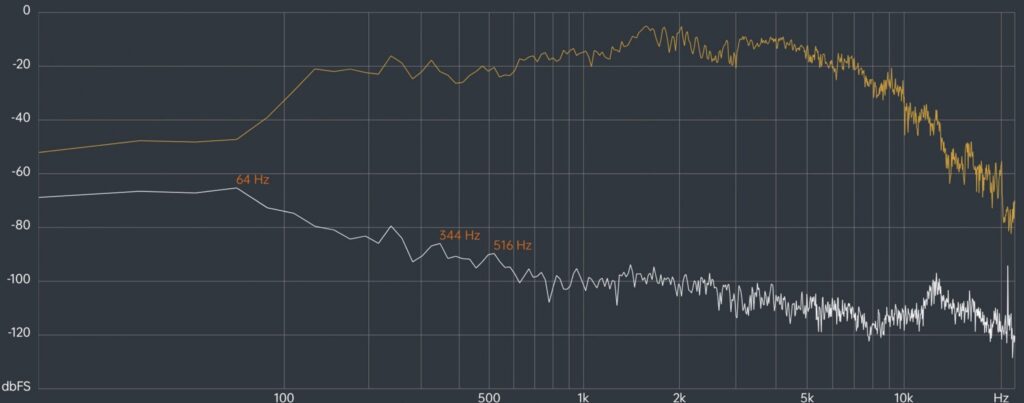
Keyboard/trackpad/kickstand – Pass+
Bluetooth makes this the first detachable keyboard, and its claimed 41-hour life makes it very useful. It also has a dock for the Surface Slim Pen storage and charging.
It is Alcantara-covered (felt/suede effect) over a new carbon fibre frame that addresses the keyboard bounce of earlier covers. It is hard-wearing. The keyboard throw is 1.4mm, and the 30g pressure is relatively light. It is a good keyboard for travel, but it does not address the characteristic Surface deck bounce. The typing experience is crisp, with decent feedback. The haptic touchpad is excellent.
We did not test the Surface Slim Pen. It is flat like a builder’s pencil, surprisingly comfortable. Tactile signals mean haptic feedback when you use natural gestures. It also features 4069 pressure levels and Zero force inking. It is even more widely used with Copilot+ features like Cocreator.
The kickstand can fold back to 165°.
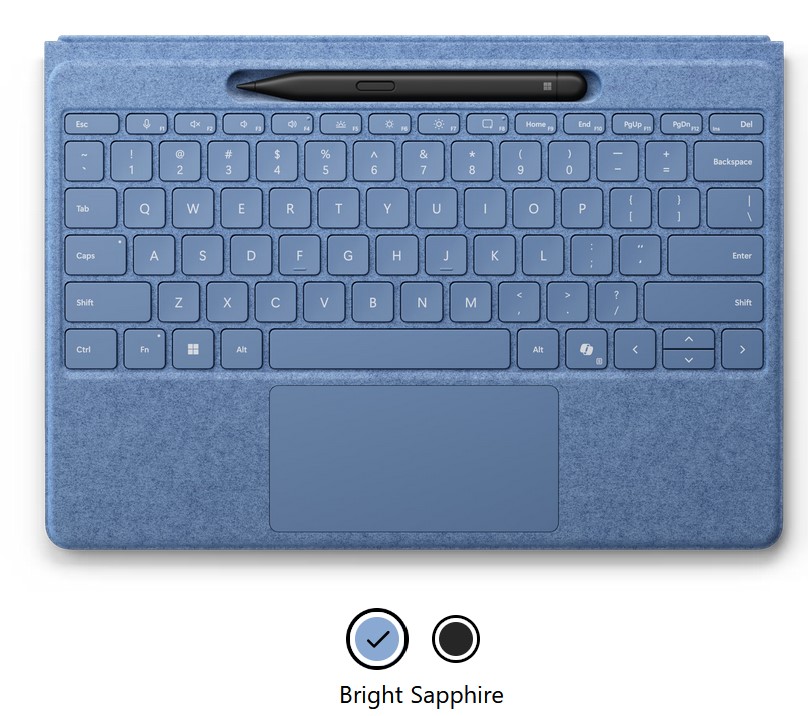
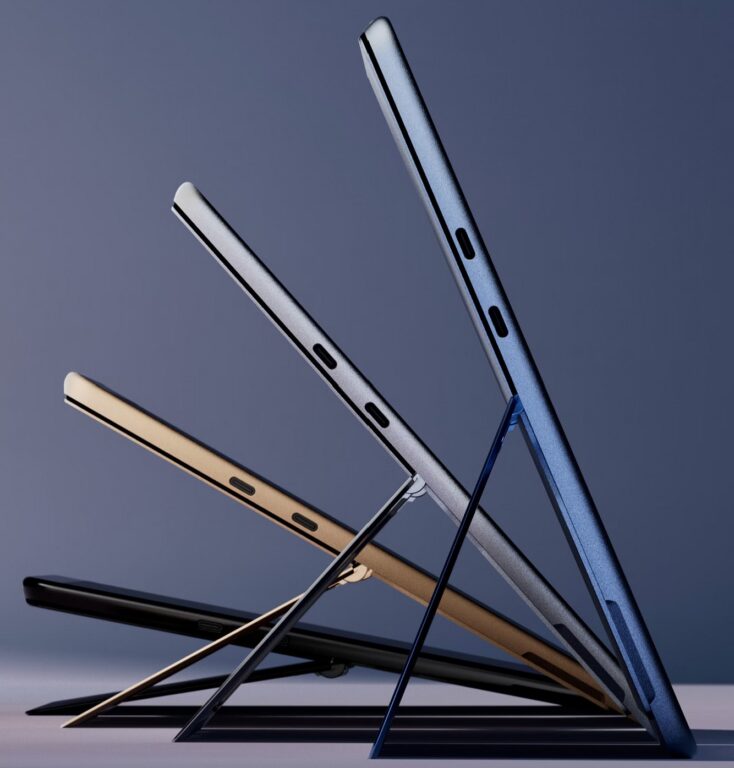
Noise – Pass+
It stays relatively quiet
Maintenance and Repairability
You can easily replace the M.2 2230 SSD (outside warranty) via a hatch under the kickstand. Entry to the chassis is via the screen. There are user-replaceable components (outside warranty). A service guide will be published shortly.
Missing – not much
- Micro-SD slot
- 3.5mm head/mic port (use BT for aptX)
- Keyboard and pen (a $500 extra)
CyberShack’s view – Microsoft Surface Pro 11 with Copilot+PC was hard to review
Our advice: don’t let AI hype influence what you buy. Put simply, this is a Windows on ARM (WOA) Copilot+PC with all that entails. It supports entry-level generative AI because it has a separate Neural Processing Unit (NPU).
In both cases, you need a reason to buy. I have used WOA for many years but know its limitations as a Windows PC. Regardless of AI/NPU support, it won’t run everything an x86 PC will, and if not using the NPU, it is no faster than a similar Intel i7 or AMD Ryzen 7.
Microsoft is either very brave with the gift of 100% foresight or very stupid (I favour the former) in launching an all-ARM Microsoft Surface Pro 11 and Surface Laptop 7.
Why? Intel and AMD have their AI chips ready and suffer from none of the WOA issues. We hope that Microsoft seriously and quickly uses its might to make WOA seamless from Windows on x86.
Why would you buy it?
- 3:2, 13.3” OLED touch screen is better for displaying video content
- Supports three screens, including 4K@60Hz
- 2 x USB-C 4.0 ports
- Replaceable SSD
- A terrific build quality – mandatory if you travel
- A stylus (option if needed)
- Can lay back to 165° for a studio-style workspace
- Meets productivity needs for speed
- Windows Hello is a natural way to sign in
- Terrific sound for a tablet
- The Windows on ARM version of an iPad Pro offers more functionality than iOS (or Android).
- Copilot is interesting and can only get better
Would I buy the Microsoft Surface Pro 11?
Today – no. In a few generations – maybe. It is for those who fully understand the implications of WOA and use native ARM-64 or Windows x32 apps that run under emulation.
As I said, I use a Samsung Galaxy Book2 WOA hybrid tablet for travel (4G) and its OLED screen for entertainment. Apart from no VPN support, it is light, durable, and fit for purpose and I don’t need AI for this use.
But also consider the downside of not using full-fat Windows x86 – drivers, some apps, way more CPU/GPU power and Thunderbolt.
Microsoft Surface Pro 11 ratings 83/100
2024 ratings use 70/100 as a pass mark. Earlier ratings used 80/100 but did not allow us enough headroom to reward excellence or class-leading.
This is tough. I am not qualified yet to rate Copilot or Copilot+PC—again, perhaps in a year or so.
If we rate it as a Microsoft Surface Pro 11 WOA versus Surface Pro 9, it will lose points for app support.
The fairest is to rate it as a Surface Pro WOA, assuming you understand any issues by choosing this path.
- Features: 85—Surface Pro hybrid tablet format is superb for travellers, students, and commuters. The hardware, Windows, and Microsoft 365 make it universally acceptable as a productivity device. The OEOD screen enhances content consumption. Beware of the subtle limitations of USB-C 4.0, especially in terms of expansion.
- Value: 70—Compared to other brands, it has always been at the top end in price, plus $499.95 for a keyboard and stylus. Yet if you want this format, you don’t care about price. The Surface Laptop 7 version will suffer more from price competition. We suspect that other Intel and AMD AI PC brands will present better value.
- Performance: 85 – NPU aside, it is not faster than the Intel i7 SP9. If you use Apps with AI/NPU awareness, then it will be faster.
- Ease of Use: 85 – If you do not step outside WOA capabilities, it presents as Windows, which is used on 80% of the world’s PCs and laptops. The caveat is that you check if your present apps work on WOA.
- Design: 90 – The Surface Pro Hybrid tablet design is flawless – if it ain’t broke, don’t fix it.
Microsoft Surface Pro 11 with Copilot+PC
From $1899 to 3599
Pros
- Beautiful 3:2 OLED display (LCD is pretty good, too)
- A design that is hard to improve
- Base level 40+TOPS NPU and generative AI capabilities
- Bluetooth keyboard/trackpad/screen protector
- Wi-Fi 7 speeds are amazing
Cons
- Windows on ARM if you expect full x86 functionality
- USB-C 4.0 is not as flexible as Thunderbolt 4
- Expensive, especially with the optional keyboard and pen


